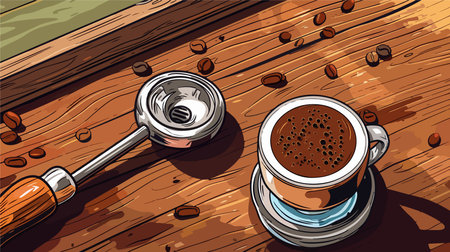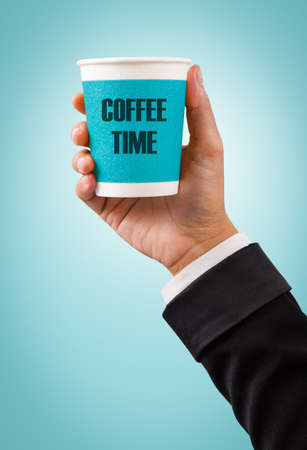1. Introduction to Caffeine and Its Popularity in the U.S.
Caffeine is one of the most widely consumed natural stimulants in the world, and it plays a big role in everyday life across the United States. Found naturally in coffee beans, tea leaves, cacao pods, and even some types of nuts, caffeine helps people feel more awake, alert, and energized. In fact, many Americans consider their morning cup of coffee not just a habit, but a necessity.
In the U.S., caffeine is deeply woven into daily routines. From stopping by local coffee shops on the way to work to enjoying iced tea at lunch or energy drinks during late-night study sessions, caffeine shows up in many forms. Its part of both personal rituals and social culture.
Natural Sources of Caffeine
Caffeine isn’t only found in coffee. Here’s a quick look at where it naturally occurs:
| Source | Common Products | Average Caffeine Content (per serving) |
|---|---|---|
| Coffee Beans | Brewed Coffee | 80–100 mg per 8 oz |
| Tea Leaves | Black/Green Tea | 30–70 mg per 8 oz |
| Cacao Pods | Dark Chocolate | 12 mg per ounce |
| Kola Nuts | Soda (e.g., cola) | 30–40 mg per 12 oz can |
| Guarana Berries | Energy Drinks | 50–100+ mg per serving |
Why Americans Love Caffeine
Caffeine has become more than just a chemical compound; its part of American identity. There are several reasons why its so popular:
- Mental Boost: Many people rely on caffeine for better focus and mental clarity, especially during work or school hours.
- Social Culture: Coffee shops serve as community hubs where friends meet, students study, and professionals work remotely.
- Convenience: Ready-to-drink coffees, teas, and energy beverages make getting a caffeine fix quick and easy.
- Taste Preferences: The bold flavor of coffee and the refreshing taste of tea or soda appeal to different palates.
- Marketing Influence: Popular brands have made caffeine consumption trendy through advertising and lifestyle branding.
This combination of physical effects, cultural habits, and convenience makes caffeine a staple in American life. Whether it’s a barista-made latte or a can of soda from the vending machine, caffeine is everywhere—and it’s not going away anytime soon.
2. How Caffeine Works in the Brain and Central Nervous System
Caffeine is best known for its ability to help us feel more awake and alert, but how exactly does it work in our brain and central nervous system? Let’s break down the science in a simple way.
Blocking Adenosine: The Key Mechanism
To understand caffeine’s effect, we need to talk about a chemical called adenosine. Throughout the day, adenosine builds up in your brain and makes you feel tired. It acts like a natural “brake,” slowing down brain activity and signaling your body that it’s time to rest.
Caffeine works by blocking adenosine receptors. Instead of slowing things down, your brain stays active because the message to relax never gets through.
How This Process Works:
| Step | Description |
|---|---|
| 1. Adenosine builds up | Makes you feel drowsy as the day goes on |
| 2. Caffeine enters the bloodstream | Takes about 30-60 minutes after consumption |
| 3. Caffeine blocks adenosine receptors | Prevents the feeling of tiredness from setting in |
| 4. Brain activity increases | You feel more alert and focused |
The Neurotransmitter Boost
Blocking adenosine doesn’t just keep you from feeling sleepy—it also triggers an increase in other brain chemicals, especially dopamine and norepinephrine. These neurotransmitters are linked to mood, concentration, and energy levels.
Main Neurotransmitters Affected by Caffeine:
- Dopamine: Often called the “feel-good” chemical; caffeine boosts its availability, enhancing mood and motivation.
- Norepinephrine: Increases alertness and heart rate; helps you stay sharp during stressful or demanding tasks.
- Glutamate: A key excitatory neurotransmitter that supports cognitive function.
CNS Stimulation: What You Feel
This increase in neurotransmitter activity stimulates your central nervous system (CNS). That’s why after drinking coffee or an energy drink, you might notice faster reaction times, better focus, and even improved physical performance for short periods.
Common Effects on the CNS:
- Increased alertness
- Improved mood and well-being
- Enhanced short-term memory and learning capacity
- Slight rise in blood pressure and heart rate (usually temporary)
This is why caffeine is such a popular go-to for early mornings, long study sessions, or when you just need a quick mental boost.

3. Short-Term Physiological Effects of Caffeine
Caffeine kicks in pretty quickly after you drink that morning cup of coffee, energy drink, or even a soda. Within about 15 to 45 minutes, your body starts to feel the effects. These short-term changes are why so many people turn to caffeine for a quick mental or physical boost.
Increased Heart Rate
One of the most noticeable immediate effects of caffeine is a faster heartbeat. Caffeine stimulates the central nervous system and blocks adenosine, a chemical that normally makes you feel relaxed or sleepy. This stimulation can cause your heart to beat faster and may slightly raise your blood pressure.
Improved Mental Focus
Caffeine helps you stay alert and focused. That’s because it increases dopamine levels—basically giving your brain a little “feel good” boost. It also helps with concentration, which is why students and professionals often rely on caffeine during long study sessions or workdays.
Common Mental Benefits After Caffeine Intake:
| Effect | Description |
|---|---|
| Increased Alertness | Helps reduce feelings of fatigue and drowsiness |
| Better Concentration | Makes it easier to focus on tasks and process information |
| Enhanced Mood | May temporarily improve mood due to dopamine release |
Boosted Physical Performance
Caffeine isn’t just for mental sharpness—it can also enhance physical performance. Many athletes use it as a legal performance enhancer. It increases adrenaline levels, which can improve endurance, strength output, and reaction time. That’s why pre-workout supplements often contain caffeine.
How Caffeine Impacts Physical Activity:
| Benefit | Explanation |
|---|---|
| Increased Endurance | Helps delay fatigue during prolonged exercise |
| Faster Reaction Time | Improves quick movements and reflexes |
| Greater Strength Output | Makes muscles work more efficiently for short bursts of effort |
Quick Tip:
The peak effects of caffeine typically occur within an hour after consumption, and they can last anywhere from 3 to 5 hours depending on your metabolism, age, and overall sensitivity to caffeine.
If youre using caffeine for a quick pick-me-up or workout boost, timing your intake wisely can make all the difference in how well it works for you.
4. Long-Term Impacts and Tolerance Development
When you drink coffee or consume other caffeinated products regularly, your body can start to adapt in ways that change how caffeine affects you. This process is known as tolerance development. Over time, the same amount of caffeine may not give you the same energy boost it once did, and you might find yourself needing more just to feel awake or focused.
Understanding Caffeine Tolerance
Caffeine works by blocking adenosine receptors in the brain — these are responsible for making you feel sleepy. When you consume caffeine often, your body may respond by creating more adenosine receptors, which means it takes more caffeine to block them and achieve the same alertness.
How Tolerance Develops Over Time
| Timeframe | Bodys Response | Effect on Caffeine Impact |
|---|---|---|
| First few days | Heightened alertness, improved focus | Strong stimulant effect |
| 1–2 weeks | Increased adenosine receptor production | Slightly reduced effectiveness |
| Over a month | Significant tolerance developed | Diminished effects; higher doses needed |
Caffeine Dependency: A Real Concern?
Although caffeine isnt considered addictive in the same way drugs like nicotine or alcohol are, regular use can lead to dependency. People who stop consuming caffeine abruptly often experience withdrawal symptoms such as headaches, irritability, fatigue, and difficulty concentrating. This is your brain reacting to the sudden lack of stimulation its become used to.
Common Withdrawal Symptoms
- Headaches
- Mood swings or irritability
- Lack of energy or sleepiness
- Trouble focusing
The Link Between Caffeine, Sleep, and Anxiety
Caffeine can stay in your system for several hours — its half-life is about 5 to 6 hours in most adults. That means if you drink coffee late in the day, it could interfere with your ability to fall asleep or get restful sleep. Over time, poor sleep can affect everything from mood and memory to overall health.
Additionally, people who are sensitive to caffeine may experience increased anxiety or nervousness after consuming even small amounts. This can lead to a cycle where caffeine worsens anxiety symptoms, which then disrupts sleep further — prompting even more caffeine use to combat daytime fatigue.
Tips for Managing Long-Term Caffeine Use:
- Avoid caffeine at least six hours before bedtime.
- Keep daily intake under 400mg (about four cups of brewed coffee).
- Take occasional “caffeine holidays” to reset your tolerance.
- Pay attention to how caffeine affects your mood and sleep quality.
If youre noticing that youre relying on caffeine just to feel normal or having trouble sleeping or feeling anxious more often, it might be worth reevaluating your intake habits. Understanding how your body reacts over time can help you make smarter choices around caffeine use.
5. Caffeine Consumption Guidelines and U.S. Health Recommendations
Caffeine is a regular part of many Americans daily routines—whether its that first cup of coffee in the morning, an energy drink before a workout, or a soda during lunch. But how much caffeine is actually considered safe? And does that amount vary from person to person? Heres what U.S. health experts have to say.
FDAs Recommended Caffeine Limits
The U.S. Food and Drug Administration (FDA) recommends that most healthy adults limit their caffeine intake to no more than 400 milligrams per day. That’s roughly the amount you’d get from four 8-ounce cups of brewed coffee, ten 12-ounce cans of cola, or two energy shot drinks.
| Source | Average Caffeine Content |
|---|---|
| Brewed Coffee (8 oz) | 95 mg |
| Espresso (1 oz) | 63 mg |
| Black Tea (8 oz) | 47 mg |
| Soda (12 oz can) | 30–40 mg |
| Energy Drink (8 oz) | 70–100 mg |
| Dark Chocolate (1 oz) | 12–30 mg |
Individual Sensitivity to Caffeine
Caffeine affects people differently based on several factors like age, weight, medications, and genetics. Some folks can drink a double espresso late at night and still sleep soundly, while others feel jittery after just one cup of tea. If youre sensitive to caffeine, even small amounts may cause restlessness, increased heart rate, or trouble sleeping.
Groups That Should Be Extra Cautious:
- Pregnant individuals: The American College of Obstetricians and Gynecologists advises limiting caffeine to under 200 mg per day.
- Children and teens: The American Academy of Pediatrics recommends minimal to no caffeine for kids due to potential effects on developing bodies and sleep patterns.
- People with certain health conditions: Individuals with anxiety disorders, heart issues, or insomnia should consult a doctor about their caffeine use.
Moderate vs. Excessive Use in the American Lifestyle
A moderate caffeine habit usually means sticking to the FDAs limit of 400 mg per day. For most adults, this allows for multiple cups of coffee or other caffeinated beverages without negative side effects. However, consuming significantly more—especially from multiple sources like coffee, energy drinks, supplements, and soda—can lead to what’s considered excessive use.
| Caffeine Use Level | Description |
|---|---|
| Low (0–100 mg/day) | Might include occasional tea or a small soda; unlikely to cause noticeable effects. |
| Moderate (100–400 mg/day) | A few cups of coffee or tea daily; typically safe for most adults. |
| High (>400 mg/day) | Linked to increased risk of side effects like anxiety, insomnia, and rapid heartbeat. |
If youre unsure whether your caffeine habits are within a healthy range, it helps to track your daily intake and pay attention to how your body responds. Everyone’s threshold is different, so listening to your body is key.
6. Cultural and Social Context of Caffeine in America
Caffeine plays a major role in American culture, not just as a stimulant but as part of daily social and work routines. From grabbing a morning coffee to powering through an afternoon slump with an energy drink, caffeine is deeply woven into the fabric of American life. This section explores how coffee culture, energy drinks, and other caffeine habits impact social interactions, workplace productivity, and wellness trends across the United States.
Coffee Culture: More Than Just a Drink
In the U.S., coffee is more than just a beverage—its a ritual. Whether its stopping by your favorite café on the way to work or meeting friends for a weekend latte, coffee serves as a social connector. Coffee shops have become community hubs where people gather to chat, study, or work remotely. The popularity of specialty coffee has also created a culture that values quality and experience, driving interest in everything from cold brew to pour-over techniques.
Caffeine at Work: Boosting Focus and Productivity
In office settings, caffeine is often seen as essential for staying alert and productive. Many workplaces provide free coffee as part of their amenities, recognizing its ability to help employees stay focused during long hours. Heres a quick breakdown of how caffeine supports productivity:
| Workplace Situation | Common Caffeine Source | Reported Benefit |
|---|---|---|
| Morning Meetings | Hot brewed coffee | Increased alertness |
| Afternoon Slump | Iced coffee or energy drinks | Improved concentration |
| Late-night Deadlines | Espresso shots or strong black tea | Delayed fatigue |
The Rise of Energy Drinks Among Younger Consumers
Energy drinks have gained popularity among younger demographics, especially students and young professionals. These beverages often contain high doses of caffeine along with other stimulants like taurine and B vitamins. While they promise quick energy boosts, overuse can lead to jitters, sleep issues, or even heart palpitations in sensitive individuals.
Youth Caffeine Habits Snapshot
| Age Group | Preferred Caffeine Source | Usage Reason |
|---|---|---|
| Teens (13-18) | Soda & Energy Drinks | Social influence & taste preference |
| Young Adults (19-30) | Coffee & Energy Drinks | Boosting study/work performance |
Caffeine and Wellness Trends
The modern wellness movement has reshaped how Americans think about caffeine. There’s growing interest in “clean caffeine” sources such as organic coffee, matcha tea, and plant-based energy supplements. At the same time, some consumers are becoming more mindful about limiting their intake to avoid anxiety or disrupted sleep patterns. Functional beverages—drinks that combine caffeine with adaptogens or vitamins—are becoming popular alternatives.
Popular Wellness-Oriented Caffeinated Products:
- Mushroom coffee blends (for focus without jitters)
- Matcha lattes (slow-release caffeine + antioxidants)
- Keto-friendly cold brews (combined with MCT oil)
- Sparkling caffeinated waters (low sugar options)
This cultural backdrop helps explain why caffeine remains such an influential part of daily life in the U.S.—it energizes not just the body, but also social connections and modern workstyles.


